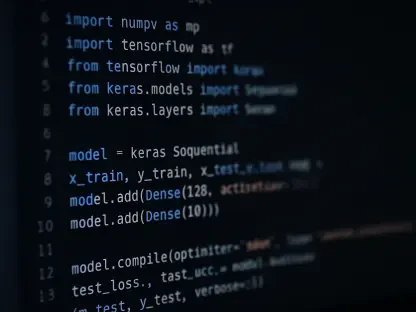What happens when the relentless pace of coding collides with the human need for rest? In the tech industry, software developers are silently battling an epidemic of burnout, a crisis that threatens not just individual well-being but also the innovation that drives entire organizations forward. Picture a developer hunched over a laptop at midnight, debugging lines of code while the weight of endless deadlines presses down. This scenario is all too common, and it’s time to confront the hidden toll of this demanding profession.
The significance of this issue cannot be overstated. With a recent survey revealing that 22% of developers are at critical burnout levels, and nearly a quarter more teetering on the edge, the stakes are high for both individuals and companies. Burnout saps creativity, slows productivity, and risks pushing talented professionals out of the field altogether. Addressing this challenge is not just about personal health—it’s about sustaining the backbone of the digital economy. This exploration uncovers the root causes, amplifies voices from the field, and offers practical solutions to shield developers from collapse.
The Silent Crisis Gripping Software Development
Burnout among software developers has escalated into a pervasive problem that demands immediate attention. A survey conducted by LeadDev in March of this year, involving 617 engineering leaders worldwide, paints a stark picture: over one-fifth of developers face severe exhaustion, while a significant portion lingers in a state of moderate distress. The tech industry’s unyielding tempo, fueled by constant innovation and systemic pressures, creates an environment where mental fatigue thrives.
Emerging challenges compound the issue further. The rise of AI-driven expectations, where developers are pushed to deliver faster results with fewer resources, adds a new layer of strain. Remote work, while offering flexibility, often blurs the boundaries between personal and professional life, making downtime a rare commodity. Understanding the depth of this crisis is essential for organizations aiming to protect their teams and maintain a competitive edge.
Root Causes Fueling Developer Exhaustion
At the heart of developer burnout lie multiple, interconnected stressors that intensify the demands of the role. Constant interruptions, often described as chaos by industry experts, disrupt the ability to focus deeply on coding tasks. Patrice Williams-Lindo, CEO of Career Nomad, highlights how developers are frequently pulled between projects, tools, and meetings, leaving little space for uninterrupted work that fosters satisfaction and progress.
Another critical factor is the lack of clear project endpoints. When goals remain vague or priorities shift unpredictably, developers are trapped in a cycle of perpetual overwork, where completion feels perpetually out of reach. This sense of endless toil drains energy and morale, creating a breeding ground for frustration. Additionally, the rushed adoption of new tools, particularly AI-driven ones, without adequate training, places undue cognitive burden on teams already stretched thin.
External pressures, such as AI-induced expectations and fears of automation, further erode stability. David Wurst of WebCitz LLC notes that clients and agencies often cut staff, expecting AI to bridge gaps, which heaps more responsibility on remaining developers. Mehran Farimani of RapidFort adds that the fear of missing out on AI advancements, coupled with job security concerns, keeps anxiety levels high. These systemic issues, combined with under-resourced teams as pointed out by Conal Gallagher of Flexera, reveal that burnout is not a personal failing but a structural challenge.
Real Stories from the Trenches
The reality of burnout resonates deeply within the developer community, as firsthand accounts bring the statistics to life. Tim Lehnen, CTO of the Drupal Association, observes that exhaustion is a persistent issue across both corporate and open-source environments. His unique perspective underscores how widespread the struggle is, regardless of the context in which developers operate, painting a picture of a universal challenge.
Echoing this sentiment, Patrice Williams-Lindo emphasizes that the problem is rooted in systemic flaws rather than individual shortcomings. Developers often feel powerless against the tide of expectations, especially as AI reshapes workflows. David Wurst shares a troubling trend where reduced workforces, driven by overreliance on AI, leave remaining staff overwhelmed with tasks that technology cannot fully address. With only 21% of developers classified as “healthy” in recent surveys, these voices highlight an urgent need for change.
Actionable Tactics to Combat Burnout
Preventing burnout in software development calls for deliberate strategies that address the unique pressures of the field. One effective approach is adopting capacity-driven planning, as suggested by Tim Lehnen. Moving away from rigid, deadline-focused schedules to agile, outcome-oriented project management allows teams to adapt without resorting to damaging crunch periods. Building in time to assess results prevents projects from lingering in a frustrating “almost done” state.
Empowering developers with greater autonomy also plays a pivotal role. By involving them in prioritization and timeline decisions, companies can reduce the sense of constant emergencies. Transparent processes, flexible work arrangements, and control over meeting schedules help restore a sense of ownership. David Wurst advocates for including developers in discussions about hiring and AI integration, ensuring tools are rolled out with training and realistic expectations, while Mehran Farimani stresses clear communication on upskilling to alleviate job security fears.
Protecting deep work time is another vital step. Patrice Williams-Lindo recommends safeguarding uninterrupted blocks of three to four hours for coding by aligning stakeholders on feasible timelines. Restructuring meetings to minimize context switching, as one of her clients successfully did, can boost team energy. Additionally, humanizing tool rollouts with proper support and shifting success metrics to focus on system stability and team health—rather than raw output—helps reconnect developers to purpose, curbing the cynicism that fuels burnout.
Reflecting on a Path Forward
Looking back, the journey to address developer burnout revealed a landscape marked by systemic challenges and personal struggles. The relentless pace of the tech world, compounded by AI pressures and blurred work-life boundaries, has created a perfect storm for exhaustion. Yet, the insights from industry leaders and the stark data paint a clear picture of what needs to change.
The path ahead requires a commitment to actionable solutions. Organizations must prioritize capacity-driven planning, empower developers with autonomy, and protect focused work time. By integrating these strategies, alongside thoughtful tool adoption and redefined success metrics, companies can build environments where developers thrive rather than merely survive. The lessons learned offer a blueprint for not just reacting to burnout, but proactively preventing it, ensuring the tech industry remains a space of innovation and human potential.









